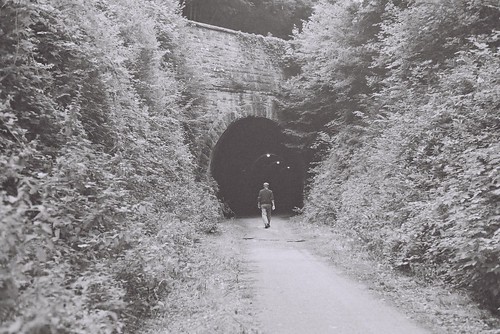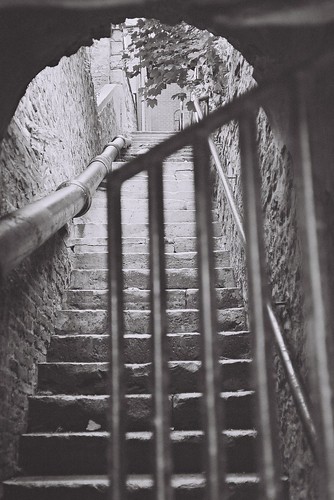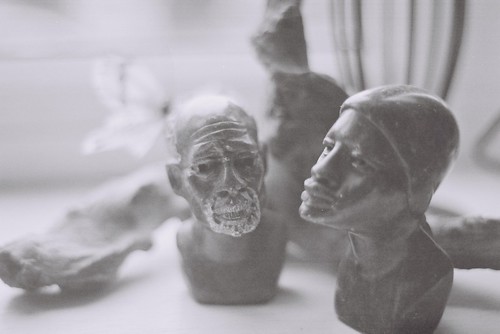(c) 2010 Seymour Jacklin
There is a lazy wind today - that's the sort of wind that doesn't bother to go around you, it just goes straight through you. But as it tears the leaves off the trees, time is running out to enjoy autumnal photography and perhaps there is time to shoot a couple more rolls before the Winter clamps down and brings another range of possibilities.
It is always windy up along this ridge, so the trees and the grass grow with a lean. This was taken with a brilliant little rangefinder called the "GEr" by Fujica. It has a wide, 38mm lense which is great for landscapes and very forgiving when focusing on closer objects. I used a slower shutter speed of about 1/60s so the moving trees are slightly blurred.
This rather oddly coloured photograph comes from a set taken on expired film that was so badly (or well) disintegrated that it caught more orange than anything else. There are some more shots from the same film in my post:
Expired Film Unpredictable Art. This tree can be found in the walled garden at Wallington House in Northumbria.
The long, low light of Autumn days is perfect for textures like this because the shadows bring out the relief.
Just about now, the sky can get really interesting as dawn and dusk last for much longer, there is plenty of opportunity for shots like this. It makes sense to meter off the clouds or the landscape underneath in order to get the exposure correct.
Make the best of the last days of Autumn and get out there before it gets dark (at 4pm).





























 Film will keep extremely well if properly looked after. Black and white film is more reliable than colour film as it ages but I have seen excellent results from properly kept film that is even six or seven years out of date. However, particularly when buying from e-bay, you can never be completely certain how much degradation there may be on an expired roll and this can sometimes yield unexpected results. Typically there is some loss of certain colours, depending on the emulsion or more grain.
Film will keep extremely well if properly looked after. Black and white film is more reliable than colour film as it ages but I have seen excellent results from properly kept film that is even six or seven years out of date. However, particularly when buying from e-bay, you can never be completely certain how much degradation there may be on an expired roll and this can sometimes yield unexpected results. Typically there is some loss of certain colours, depending on the emulsion or more grain. 
